Rhinoceros hornbill || Description, Characteristics and Facts!
Description:
The Rhinoceros Hornbill is one of the largest hornbill species, measuring around 90 to 122 centimeters (35 to 48 inches) in length, with a wingspan that can reach up to 150 centimeters (59 inches). Its plumage is predominantly black, with white feathers on the belly, tail, and wingtips. The male boasts a striking reddish-orange eye ring, while the female has a blue one. However, the most distinctive feature of this bird is undoubtedly its large, casqued bill, which is yellow-orange in color and has a prominent horn-like projection atop it. This casque serves both aesthetic and practical purposes, helping to amplify the bird's calls and acting as a visual signal during courtship displays.
Characteristics:
Habitat: Rhinoceros Hornbills are primarily found in the dense tropical rainforests of Southeast Asia, where they inhabit both lowland and montane forests.
Diet: These birds are omnivorous, feeding on a varied diet that includes fruits, figs, small mammals, reptiles, insects, and occasionally small birds.
Behavior: Rhinoceros Hornbills are usually seen flying high in the canopy, where they are agile and adept at navigating through the dense foliage. They are known for their distinctive loud calls, which are often heard echoing through the forest.
Breeding: Like many other hornbill species, Rhinoceros Hornbills exhibit elaborate courtship rituals and mate for life. They typically nest in tree hollows, with the female sealing herself inside the nest cavity using a mixture of mud, droppings, and food remains, leaving only a narrow slit through which the male can feed her and their chicks.
Conservation: While still relatively common in some parts of its range, the Rhinoceros Hornbill faces threats from habitat loss due to deforestation and hunting for its casque and feathers. Conservation efforts are underway to protect its natural habitat and raise awareness about the importance of preserving these iconic birds.
#RhinocerosHornbill #BirdsOfAsia #RainforestSpecies #WildlifeConservation #NaturePhotography #TropicalBirds
-
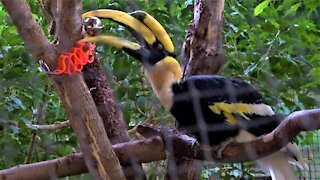 1:28
1:28
WildCreatures
3 years ago $1.63 earnedBeautiful giant hornbill plays happily with a new toy
7.22K13 -
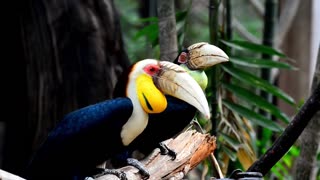 0:18
0:18
beautifuloversland
1 year agoThe Magnificent Hornbill Bird: A Symbol of Nature's Beauty and Diversity
4 -
 2:22
2:22
Smoothie7777
4 months ago"Rare hornbill species"
30 -
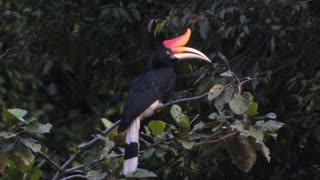 1:41
1:41
Welcome to the Jungle
6 months agored horned hornbill eat grains in the rainforest
1002 -
 1:23
1:23
WildCreatures
3 years ago $2.30 earnedThe great hornbill is a beautiful bird that builds itself a prison
9.8K13 -
 0:33
0:33
Fourthestate
1 year agoHORNY DEVIL: Rhino Uses Tree Branch To File His Horn Into Shape
26 -
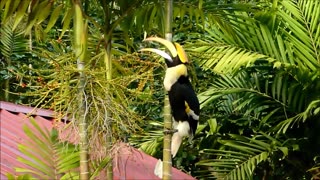 0:41
0:41
Georgiahightower
8 months agoThe Great Hornbill
782 -
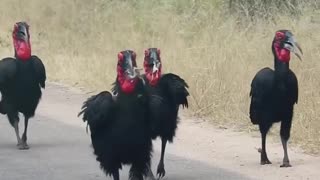 0:08
0:08
SusieQ4u
9 months agoSOUTHERN GROUND HORNBILLS
1323 -
 3:28
3:28
Live Nature
1 year agoRhinoceros and hippopotamus weight mammal
7 -
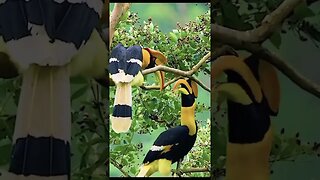 0:12
0:12
NewsTodayOne
11 months agoImmerse yourself in the enchanting world of the hornbill with its characteristic beak...
86